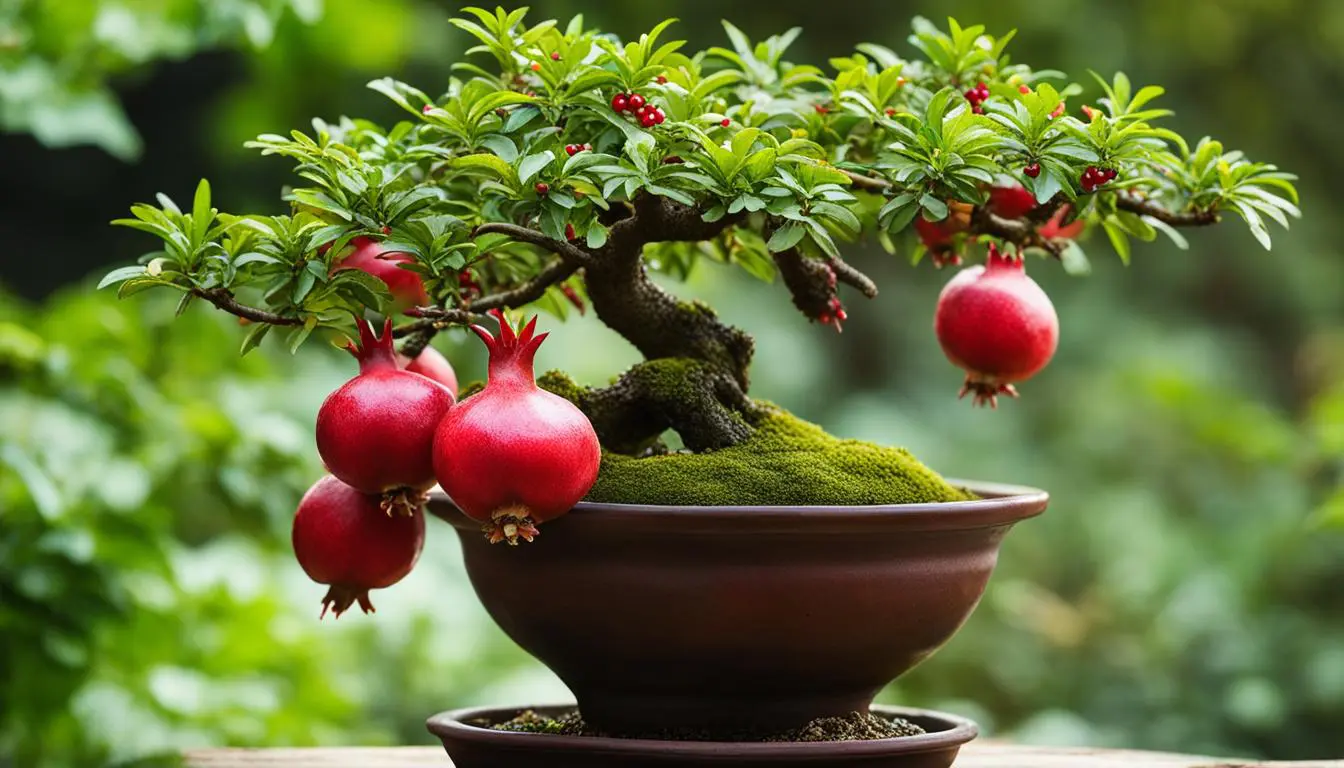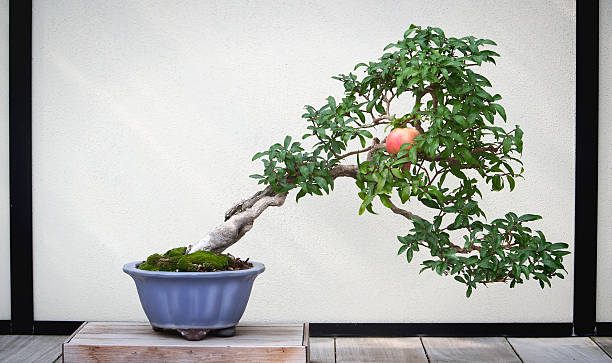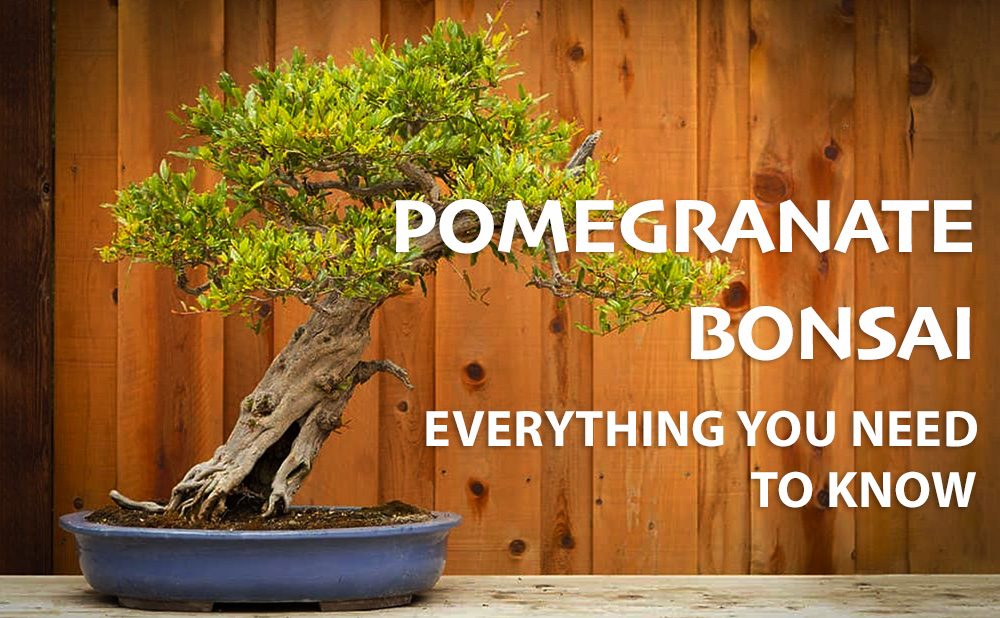- No products in the cart.
General Information of Pomegranate Bonsai Tree
The Pomegranate Bonsai, or Punica granatum, stands out as a notable Mediterranean species of broadleaf deciduous trees. In warmer environments, it behaves as a semi-evergreen, shedding some leaves in the fall and winter regardless of its growing location.
Gardeners highly prize this species for its naturally twisting trunk and the ability to develop strong, defined veins. The Pomegranate bonsai exhibits striking, spontaneous branching that mirrors the unique, unexpected twists found in its trunk.
This bonsai typically bears fruit only in regions with warm, extended summers and mild winters, like Japan and the Mediterranean. While it will bloom in cooler climates, it often lacks the necessary prolonged heat to produce fruit.

Caring for Your Pomegranate Bonsai
How to Water Pomegranate Bonsai
Dwarf Pomegranate bonsai thrive on water during their growth and cultivation phases. As a broadleaf deciduous with high water mobility, they require significant hydration. Although they should not remain overly wet, pomegranates do favor a moist environment, balancing between hydration and aeration.
Sun Exposure
Pomegranate bonsai tree withstand intense sunlight better than many broadleaf deciduous trees when planted in bonsai containers. In larger containers, they can endure full sunlight throughout the summer, requiring only occasional shade on exceptionally hot days. However, in smaller, shallower containers, they benefit from light shading during peak afternoon sun.
Temperature
Pomegranate bonsai tree handle temperatures above 100°F and periodic freezes down to 25°F quite well. Despite their robust nature, prolonged freezing periods can weaken them. Protection is advisable if temperatures are expected to drop to 25°F for extended periods.
Fertilizing
During the refinement phase, it’s best to fertilize pomegranate bonsais moderately from early growth in spring until mid-July, resuming in early fall after leaf drop. For development, more aggressive fertilization supports the proliferation of tertiary branching and ramification.

Pruning
Dwarf Pomegranate Bonsai, which grow aggressively, are ideally pruned for refinement after leaf drop in fall. They can be pruned two to three times a year, enhancing ramification by pruning back to a single node, which encourages bifurcation and the growth of finer twigs by spring. Avoid structural pruning during summer to prevent sunburn on newly exposed bark.
Wiring
The best times for wiring pomegranate bonsais are in the fall as the leaves drop or in spring before growth begins. Avoid wiring during active growth periods in late spring or early summer to prevent disrupting the tree’s water transport.
Repotting
Spring, just as the buds begin to swell, is the best time to repot pomegranate bonsais. Techniques like flattening the base, reducing to finer roots, and removing downward-growing roots help establish a strong structural foundation. Repotting can also occur in the hottest part of summer for minor adjustments or for exhibition preparation.
Propagation
Pomegranate bonsais, prolific in root production, excel in propagation from cuttings. Maintain high humidity after taking cuttings to enhance rooting, especially with semi-hardwood or hardwood cuttings.
Pests/Disease
Peach leaf curl poses significant challenges in spring, especially in rainy areas, causing foliage distortion and weakening the tree over time. Early treatments with fungicides or protective measures against rain are essential. Aphids are common and can be managed initially with water, or with chemical treatments if necessary, although introducing predatory insects is a more sustainable method.

Pomegranate Bonsai FAQ
How to Encourage Flowering in Your Pomegranate Bonsai?
Pomegranate bonsai produces flowers on strong, untrimmed growth. When you prune for refinement, you often remove the parts of the tree that would otherwise flower and bear fruit.
To encourage your bonsai to flower, avoid pruning the first growth that hardens after the spring flush. Instead, allow the tree to develop many potential flower bud producers from mid to late summer. During this period, the buds will flower and, with pollination, begin to bear fruit in late summer and early fall.
Providing your pomegranate bonsai with plenty of full sun will enhance its vigor, leading to more substantial growth where branches extend. This is typically when you can expect to see both flowers and fruits develop.
Can Pomegranate Bonsai Tolerate Cold Weather?
Pomegranate bonsai can tolerate cold conditions to some extent. However, to prevent any harm, it’s advisable to protect them from extended periods of cold and freezing temperatures lasting more than a week.

